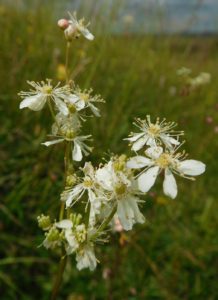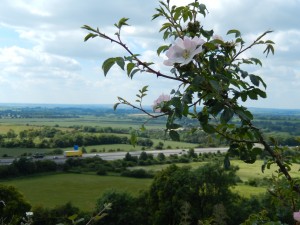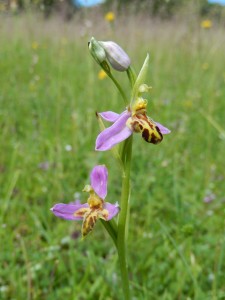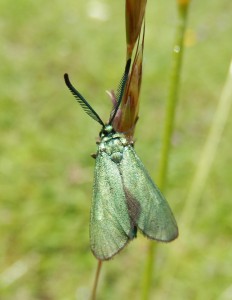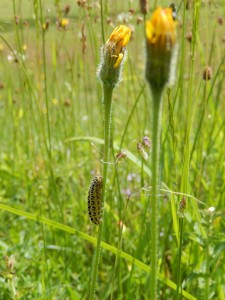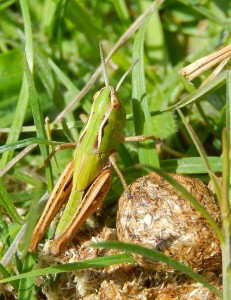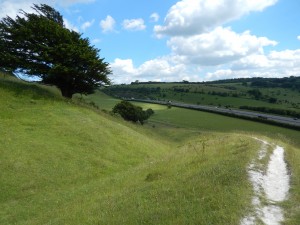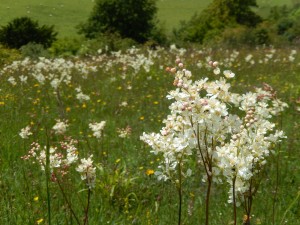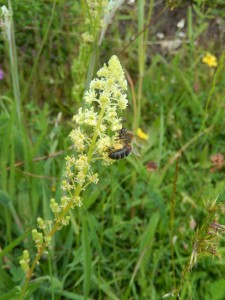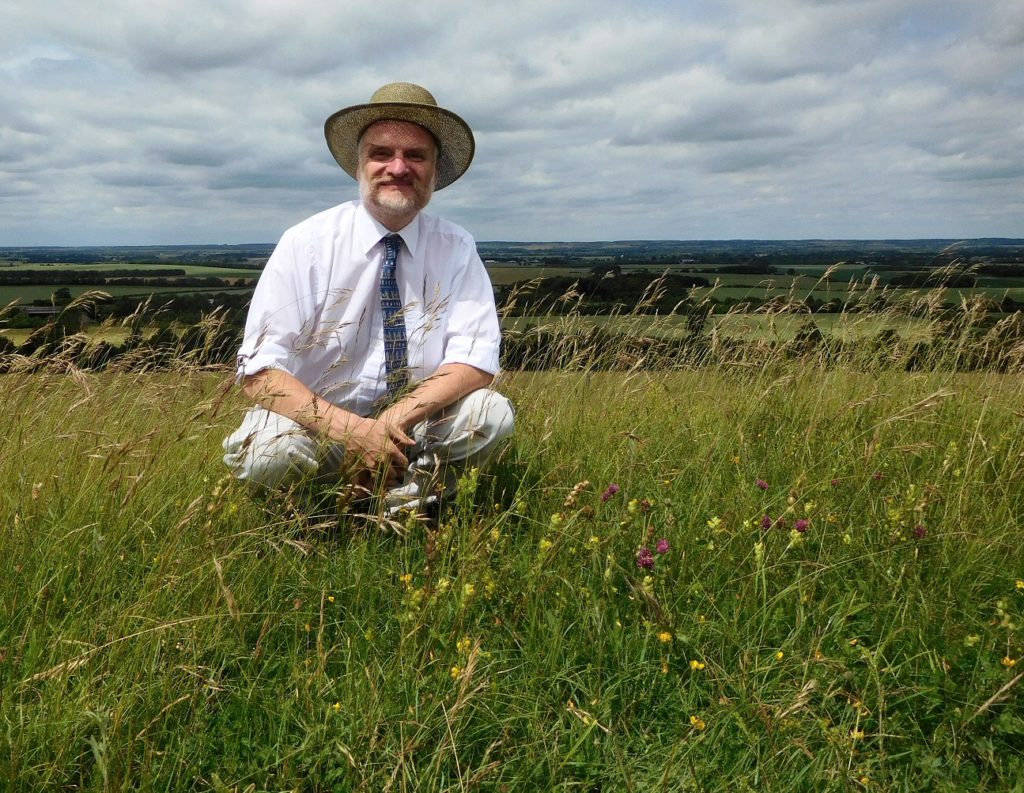
Much of East Anglia is flat, and very low-lying, indeed parts of the Fens are basically at sea level. But there are some hills, and even a Chalk escarpment. It’s pretty low, but still affords a fine view northwards across the plains. The nearly complete “failure of a major escarpment” is the result of the Ice Ages – the ice sheet, maybe a mile thick, ground interminably over the hills and plains, reducing most of the chalk to rock flour with flints, creating the sticky Boulder Clay that carpets much of eastern England. But at Royston, a delightful range of low hills survives, and has somehow survived the plough and the developers.
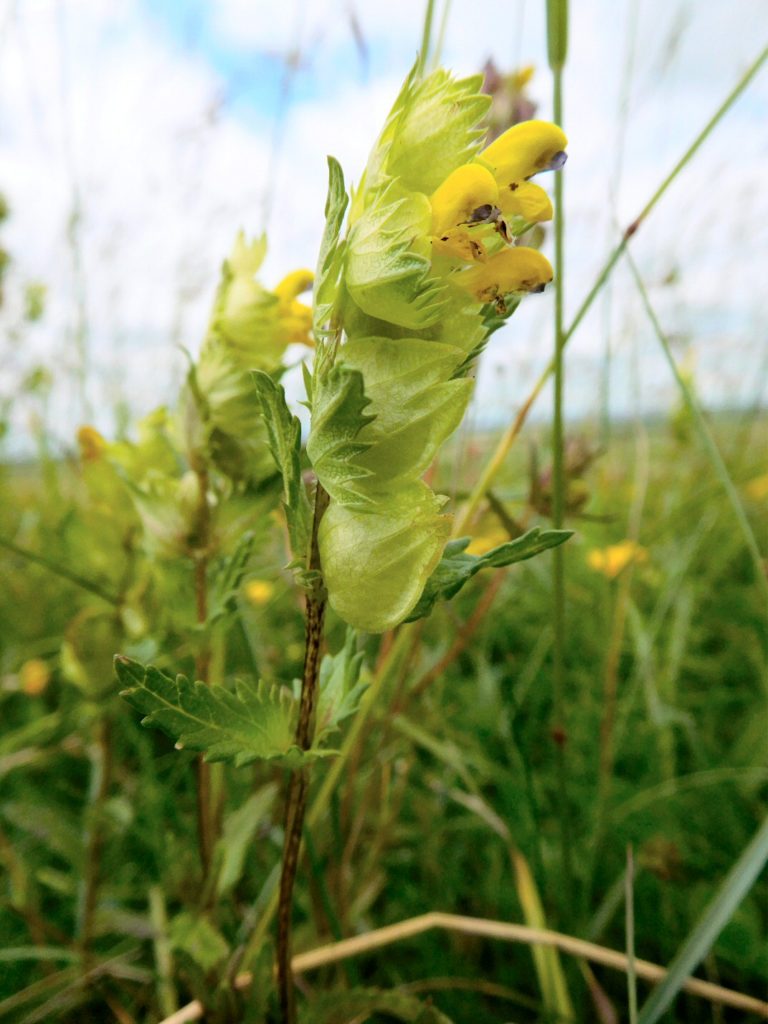
The grass of Therfield Heath (Royston Hill) is thinned by the parasitic Yellow Rattle (Orobanchaceae, the Broomrape family of parasitic plants): it helpfully weakens the grass, allowing in many other flowers, so it’s a bit of a Keystone Species, one on which the health of the ecosystem depends.
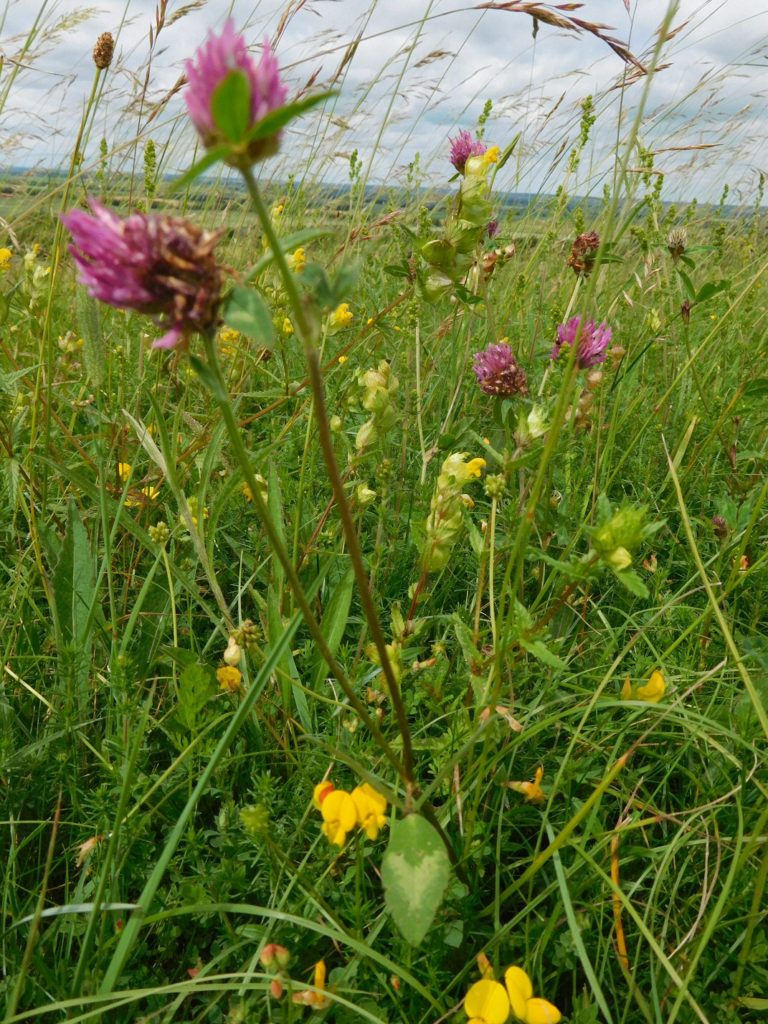
The plants let in by the weakening of the grass include a colourful and increasingly rare assemblage, which includes Kidney Vetch, Birdsfoot Trefoil, Rockrose, Thyme, Wild Mignonette and many others.
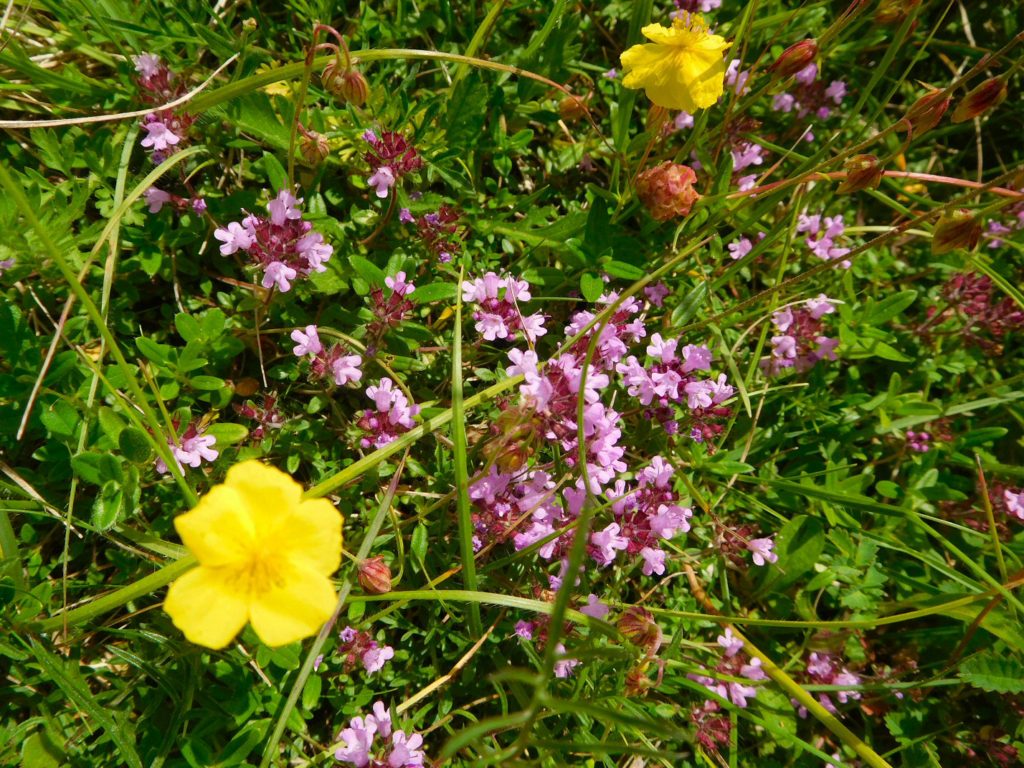
The flowers in turn support butterflies including Marbled White, Meadow Brown, and Small Heath. Half-a-dozen Skylarks were singing all around; one got up pretty close to us for a brief song-flight, quickly followed by several of his neighbours. A Swift dashed overhead. All these once-familiar and widespread species are becoming rather special, a measure of the ecological disaster that has spread not just across England but across Europe and, really, the whole world.
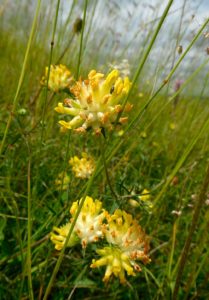
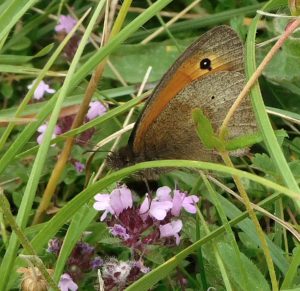
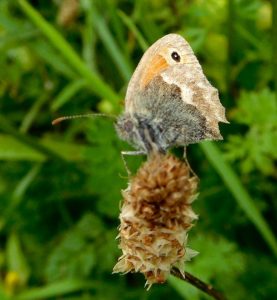
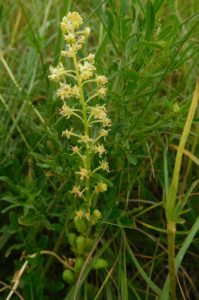
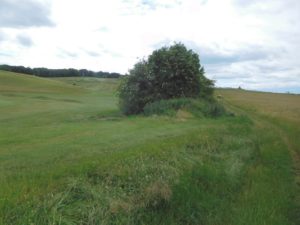
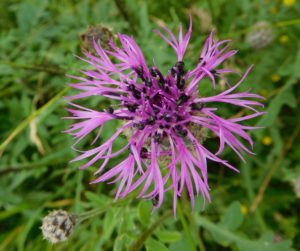
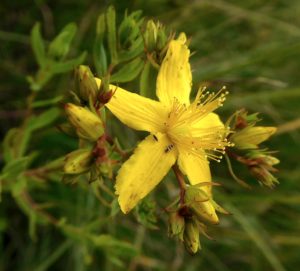
It’s interesting to see a pattern in the distribution of plants. I last saw Dropwort on Helsington Barrows, a limestone hill at the southern edge of the Lake District (not a place with much limestone, given the area’s ancient volcanic rocks and slates). Here it’s on a very different form of limestone, chalk, but if the soil is alkaline and supports open grassland, that’s fine with Dropwort. It’s a plant with a beautiful foamy white cluster of flowers on a rather isolated stalk rising from the grassland. The attractive foaminess is reminiscent of Meadowsweet, Filipendula ulmaria, and indeed Dropwort is in the same genus: it’s Filipendula vulgaris, though it could hardly be called common these days.
